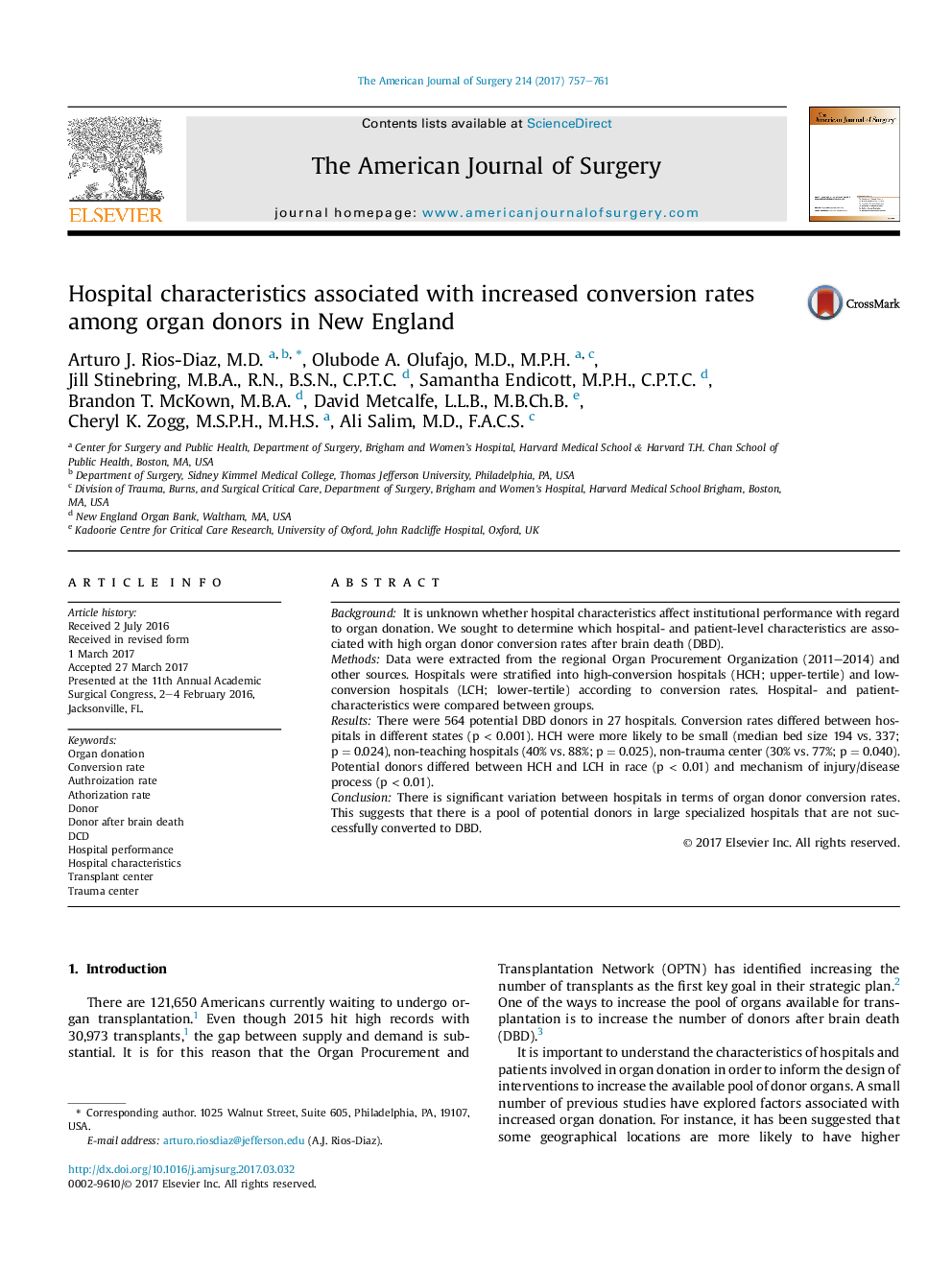| Article ID | Journal | Published Year | Pages | File Type |
|---|---|---|---|---|
| 5731228 | The American Journal of Surgery | 2017 | 5 Pages |
BackgroundIt is unknown whether hospital characteristics affect institutional performance with regard to organ donation. We sought to determine which hospital- and patient-level characteristics are associated with high organ donor conversion rates after brain death (DBD).MethodsData were extracted from the regional Organ Procurement Organization (2011-2014) and other sources. Hospitals were stratified into high-conversion hospitals (HCH; upper-tertile) and low-conversion hospitals (LCH; lower-tertile) according to conversion rates. Hospital- and patient-characteristics were compared between groups.ResultsThere were 564 potential DBD donors in 27 hospitals. Conversion rates differed between hospitals in different states (p < 0.001). HCH were more likely to be small (median bed size 194 vs. 337; p = 0.024), non-teaching hospitals (40% vs. 88%; p = 0.025), non-trauma center (30% vs. 77%; p = 0.040). Potential donors differed between HCH and LCH in race (p < 0.01) and mechanism of injury/disease process (p < 0.01).ConclusionThere is significant variation between hospitals in terms of organ donor conversion rates. This suggests that there is a pool of potential donors in large specialized hospitals that are not successfully converted to DBD.
